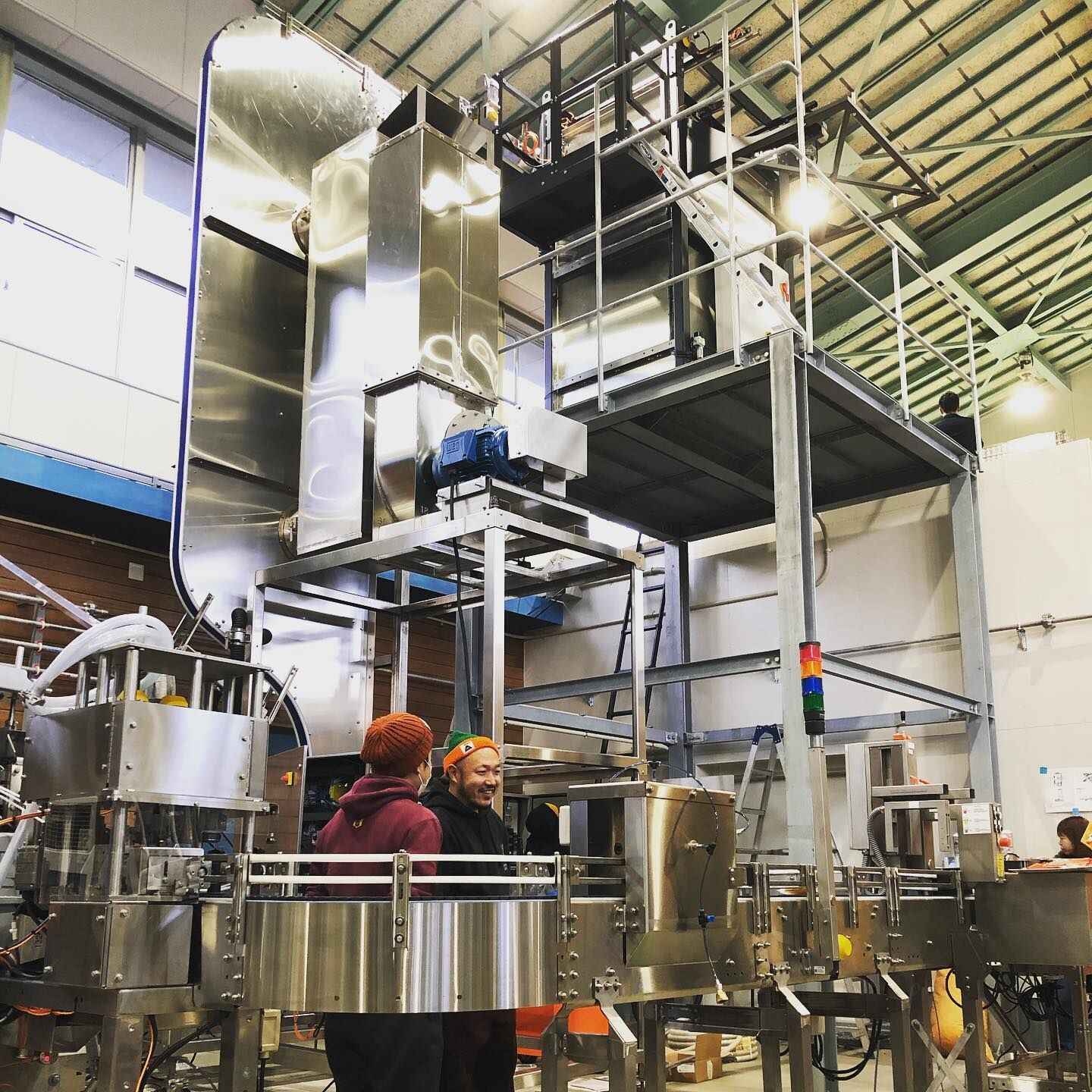The Ultimate Guide to Micro Brewing System
Craft beer has taken the world by storm in recent years, and one of the key players in this movement is the micro brewing system. Unlike large-scale commercial breweries, micro breweries produce beer in small batches using specialized equipment that allows for greater creativity, flexibility, and quality control. If you’re a beer enthusiast who’s interested in exploring the world of micro brewing, you’ve come to the right place. In this ultimate guide, we’ll take a deep dive into the essential components of a high-performance micro brewing system, how it differs from a traditional brewing system, what types of beer can be brewed, and the benefits of integrating micro brewery equipment into your set-up. Whether you’re a homebrewer or a professional brewer, this guide will provide you with the knowledge and tools you need to take your beer to the next level. So grab a cold one and let’s get started!
Definition of Micro Brewing System
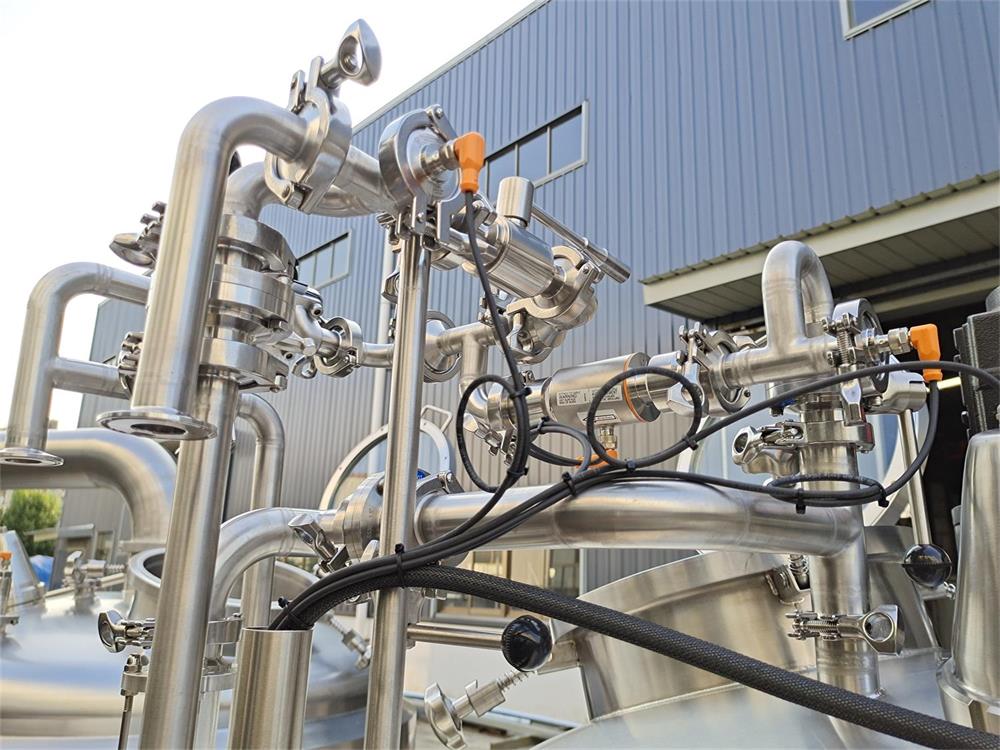
A micro brewing system is a specialized brewing equipment setup designed to produce small batches of beer, typically ranging from a few gallons to a few hundred gallons. It is often used by craft brewers, homebrewers, and small-scale commercial breweries who value quality, creativity, and flexibility in their brewing process. Micro brewing systems can be fully manual or semi-automated, and are typically designed to accommodate a variety of beer styles and brewing techniques. The size and complexity of micro brewing systems can vary widely, but they all share a focus on producing high-quality, unique beers in small quantities.
Brief History and Growth of Micro Brewing System
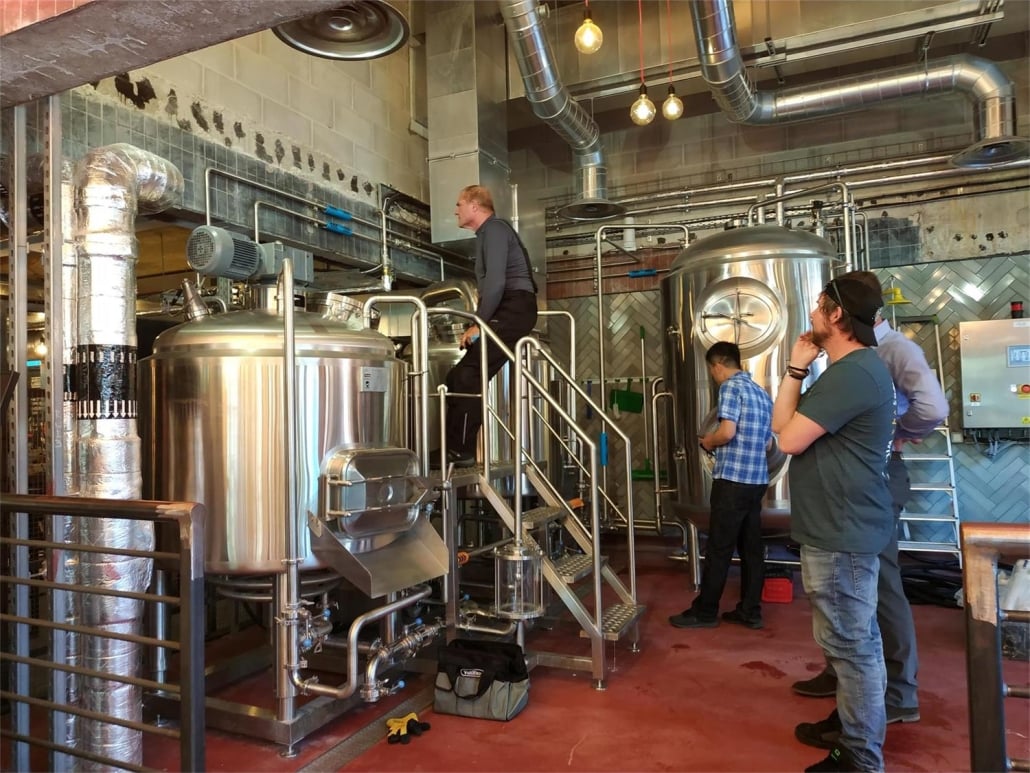
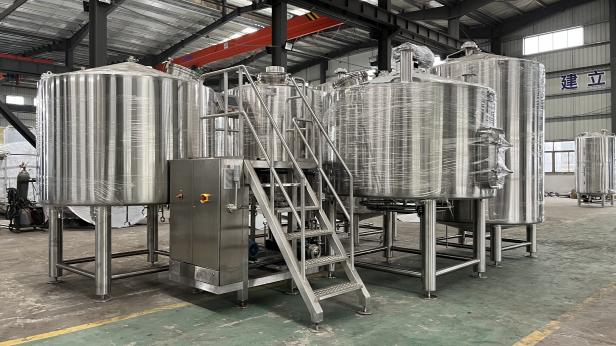
The history of micro brewing systems can be traced back to the early 1980s, when a few pioneering brewers in the United States began experimenting with small-scale brewing equipment to produce artisanal beers with unique flavors and styles. These early micro breweries faced significant challenges, including high startup costs, limited availability of quality ingredients and equipment, and a lack of consumer awareness and demand for craft beer.
Despite these obstacles, the micro brewing movement grew steadily throughout the 1980s and 1990s, fueled by the passion and dedication of a small but growing community of craft brewers and beer enthusiasts. As consumer tastes and preferences shifted towards locally sourced, high-quality, and artisanal products, micro breweries began to gain wider recognition and acceptance.
In recent years, the growth of micro brewing systems has exploded around the world, with new breweries opening every day and a global market for craft beer that shows no signs of slowing down. Today, micro brewing systems are found in homes, garages, and small businesses around the world, producing a staggering variety of beers in a wide range of styles and flavors. Whether you’re a seasoned beer lover or a curious beginner, there’s never been a better time to explore the exciting world of micro brewing.
Components of Micro Brewing System
A high-performance micro brewing system typically consists of several essential components, each playing a critical role in the brewing process. Here are some of the key components you’ll find in a typical micro brewing system:
- Mash tun and boil kettle: The mash tun is where the brewing process begins, with the mashing of grains and hot water to create a sugary liquid called wort. The boil kettle is where the wort is boiled, hops and other ingredients are added, and flavors and aromas are developed.
- Fermentation vessels: After boiling, the wort is cooled and transferred to fermentation vessels, where yeast is added to convert the sugars into alcohol and carbon dioxide. Fermentation vessels can be made of stainless steel, plastic, or glass, and come in a variety of shapes and sizes.
- Cooling system: A cooling system is used to rapidly cool the wort after boiling, in order to prevent off-flavors and ensure proper yeast fermentation. This can be done using a variety of methods, including a heat exchanger or a glycol cooling system.
- Pumps and hoses: Pumps and hoses are used to transfer the wort and beer between different components of the brewing system, such as the mash tun, boil kettle, and fermentation vessels.
- Wort oxygenation system: Oxygen is essential for yeast growth and fermentation, and a wort oxygenation system is used to ensure that the yeast has adequate oxygen during the fermentation process.
- Control system: A control system is used to monitor and regulate the temperature, pressure, and other variables in the brewing process, ensuring consistent quality and flavor of the beer.
These are just a few of the essential components of a high-performance micro brewing system. The specific components and configurations can vary widely depending on the brewer’s preferences, budget, and brewing goals.
Differences between Micro Brewing System and Traditional Brewing System
Micro brewing systems differ from traditional brewing systems in several ways. Here are some of the key differences:
- Batch size and production capacity: Micro brewing systems typically produce smaller batches of beer, ranging from a few gallons to a few hundred gallons, whereas traditional brewing systems are designed to produce much larger quantities of beer, often in excess of 1,000 gallons per batch.
- Level of automation: Micro brewing systems can be fully manual or semi-automated, with brewers having greater control over the brewing process and the ability to make adjustments on the fly, whereas traditional brewing systems are often fully automated, with little room for customization or experimentation.
- Flexibility in recipe development: Micro brewing systems offer greater flexibility in recipe development, with brewers able to experiment with different ingredients, brewing techniques, and beer styles, whereas traditional brewing systems are often more limited in their recipe development due to the need to maintain consistent quality and flavor across large batches.
- Quality and consistency of beer: While both micro brewing systems and traditional brewing systems can produce high-quality beer, micro brewing systems offer greater control over the brewing process, allowing for greater consistency and quality of the final product.
Overall, micro brewing systems offer greater flexibility, creativity, and quality control than traditional brewing systems, making them a popular choice for craft brewers, homebrewers, and small-scale commercial breweries.
Types of Beer That Can Be Brewed with Micro Brewing System
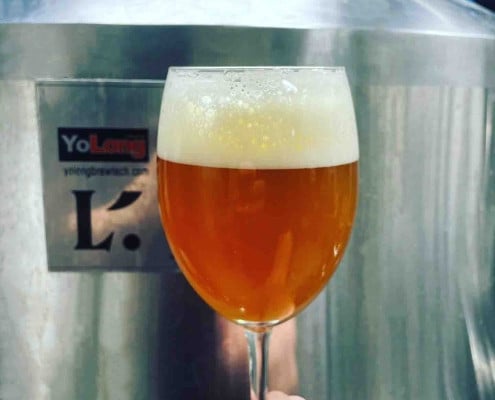


Micro brewing systems are versatile and can accommodate a wide range of beer styles and brewing techniques. Here are some of the most popular types of beer that can be brewed using a micro brewing system:
- Ale: Ales are top-fermented beers that are brewed at warmer temperatures, resulting in a wide range of flavors and styles, including pale ale, IPA, stout, porter, and Belgian-style ales.
- Lager: Lagers are bottom-fermented beers that are brewed at cooler temperatures and require longer maturation times, resulting in a cleaner, crisper taste. Examples of lagers include pilsner, Munich-style helles, and Vienna-style lager.
- Sour beer: Sour beers are brewed using wild yeast or bacteria, resulting in a tart or sour flavor profile. Examples of sour beer styles include lambic, Flanders red ale, and Berliner Weisse.
- Wheat beer: Wheat beers are brewed using a high proportion of wheat malt, resulting in a light, refreshing taste and a cloudy appearance. Examples of wheat beer styles include hefeweizen, witbier, and American wheat beer.
Benefits of Integrating Micro Brewery Equipment into Your Micro Brewing System

Integrating micro brewery equipment into your micro brewing system can provide numerous benefits, including:
- Cost-effectiveness: Micro brewery equipment can be more cost-effective than traditional brewing equipment, especially for small-scale operations, due to its smaller size and lower capital cost.
- Increased efficiency and productivity: Micro brewery equipment is designed for efficient and streamlined brewing, allowing for faster and more consistent brewing times and greater production capacity.
- Consistent quality and flavor of beer: Micro brewery equipment allows for greater control over the brewing process, resulting in a more consistent quality and flavor of the beer.
- Opportunity for creativity and experimentation: Micro brewery equipment provides the flexibility and creativity to experiment with a wide range of ingredients, techniques, and beer styles, resulting in unique and innovative beers that can set your brewery apart from the competition.
- Customer appeal: Micro brewing systems and unique beer styles have gained a cult following among craft beer enthusiasts, providing an opportunity to attract and retain customers who are looking for something different and unique.
By integrating micro brewery equipment into your micro brewing system, you can take your brewing to the next level, producing high-quality, unique, and innovative beers that appeal to a wide range of customers.
In conclusion, micro brewing systems offer a cost-effective and efficient alternative to traditional brewing systems. With the flexibility and creativity to experiment with a wide range of ingredients and techniques, brewers can produce high-quality, unique, and innovative beers that appeal to a wide range of customers. By integrating micro brewery equipment into their micro brewing system, brewers can increase efficiency and productivity, ensure consistent quality and flavor of beer, and attract and retain customers who are looking for something unique and different. The growth of micro brewing systems has exploded in recent years, and there has never been a better time to explore the exciting world of craft beer. So why not start your own micro brewing system and see where your creativity and passion takes you?
Frequently Asked Questions (FAQ)
- Q1: What batch size defines a Micro Brewing System versus nano or regional?
A1: Micro systems typically run 3–15 bbl brewhouses with annual output below ~15,000 bbl, sitting between nano (≤3 bbl batches) and regional production systems. - Q2: Which automation level suits most micro breweries?
A2: Semi-automated brewhouses with PLC recipe steps, VFD pumps, and basic data logging balance cost and repeatability; full auto is ideal when labor is tight or SKUs are high. - Q3: What utilities should I plan for a 10 bbl Micro Brewing System?
A3: Commonly 1–2 MMBtu/h steam or 80–120 kW electric heat, 10–20 HP glycol (30–70 kW), 208–480V 3-phase power, 10–20 scfm compressed air at 90–120 psi, and 1–2” water service. - Q4: How many fermenters should I start with?
A4: Aim for total FV volume 4–6× brewhouse size (double-batch tanks are efficient). For a 10 bbl system, 4–6 × 20 bbl FVs plus 1–2 × 20 bbl BBTs is a common starting cellar. - Q5: What KPIs prove my Micro Brewing System is dialed in?
A5: Brewhouse efficiency 86–92%, cellar turnaround time 10–18 days (style-dependent), water-to-beer ratio 3.0–4.5 hL/hL, post-transfer DO 20–50 ppb, and CO2 use 0.6–1.0 lb/bbl.
2025 Industry Trends: Micro Brewing System
- Electrification and hybrid heat: More 7–15 bbl systems opt for electric or hybrid steam/electric kettles to meet codes and reduce emissions.
- Data-forward cellars: Inline density and DO sensors tied to OPC UA/MQTT enable predictive fermentation and tighter diacetyl control.
- Oxygen-minimized workflows: Closed transfers, pressurized hop dosing, and 30 psi-rated FVs standardize flavor stability.
- Sustainability as standard: Heat recovery (vapor condensers, chiller reclaim) and rinse-to-endpoint CIP routines lower utilities.
- Small-format packaging control: Counter-pressure canning with dissolved oxygen targets drives shelf stability for local distribution.
2025 Benchmarks for Micro Brewing System Performance
| Metric / Spec | 2023 Typical | 2025 Target/Best-in-Class | Why it Matters | Sources |
|---|---|---|---|---|
| Water-to-beer (hL/hL) | 4.5–6.0 | 3.0–4.0 | Cuts cost and environmental impact | Brewers Association Sustainability |
| Brewhouse energy (kWh/hL equiv.) | 10–14 | 6–9 | Heat recovery and controls reduce OPEX | U.S. DOE Better Plants |
| Post-transfer DO to FV (ppb) | 80–150 | 20–50 | Shelf life and hop aroma retention | ASBC DO/TPO |
| DO in package (ppb TPO) | 60–150 | <30 for cans | Prevents staling; consistent flavor | ASBC Methods |
| CIP time per FV (min) | 90–120 | 55–80 | Faster tank turns, less labor | BA/MBAA case data |
| On-site sales share (%) | 50–70 | 60–85 | Margin resilience at micro scale | BA benchmarking |
Selected references: American Society of Brewing Chemists — https://www.asbcnet.org; Brewers Association — https://www.brewersassociation.org; U.S. Department of Energy — https://www.energy.gov; Master Brewers Association of the Americas — https://www.mbaa.com
Latest Research Cases
Case Study 1: Hybrid Electric/Steam 10 bbl Brewhouse Cuts Utilities (2025)
Background: A suburban micro brewery faced rising gas costs and permitting hurdles for full-steam installations.
Solution: Installed a hybrid kettle (electric primary, low-pressure steam assist), vapor condenser tied to HLT preheat, and PLC-controlled boil power.
Results: Brewhouse energy intensity dropped 23% (to ~7.8 kWh/hL equiv.); strike-to-boil time improved by 15–20 minutes; annual utility savings ~$14,000; payback in 2.1 years.
Case Study 2: Inline Density + Closed Transfers Improve Consistency (2024)
Background: Variable attenuation and elevated package oxygen limited distro shelf life.
Solution: Added inline oscillating U-tube density and DO sensors, spunding at 1.6–2.0 vol CO2, and fully closed transfers to BBT and canning.
Results: Attenuation variance cut 60%; TPO in cans reduced from 70–110 ppb to 20–35 ppb; returns for oxidation dropped by 80% over six months.
Expert Opinions
- Dr. Tom Shellhammer, Professor, Oregon State University
Viewpoint: “In micro brewing, oxygen management and thermal control are the highest-leverage variables for hop-forward flavor stability.” - Mary Pellettieri, Brewing Quality Consultant; Author of Quality Management for Breweries
Viewpoint: “Specify hygienic design—surface finish, weld quality, and drainability—and validate CIP endpoints to lock in microbiological consistency.” - Chris White, PhD, Founder/CEO, White Labs
Viewpoint: “Yeast health is your engine room. Correct pitch rates, oxygenation, and timely harvesting extend strain performance over multiple generations.”
Practical Tools/Resources
- Brewers Association: Sustainability, safety, and draught quality manuals — https://www.brewersassociation.org
- ASBC Methods of Analysis (DO/TPO, VDK, pH, bitterness) — https://www.asbcnet.org
- MBAA Technical Quarterly & webinars — https://www.mbaa.com
- OPC Foundation (OPC UA for brewery sensors/controls) — https://opcfoundation.org
- U.S. DOE Better Plants (steam, electrification, heat recovery guides) — https://www.energy.gov
- White Labs and other supplier pitch rate calculators (yeast management)
Last updated: 2025-09-01
Changelog: Added 5 targeted FAQs; introduced 2025 Micro Brewing System trends with benchmark table and sources; included two case studies on hybrid heating and inline sensing/closed transfers; added expert viewpoints and practical resources
Next review date & triggers: 2026-02-15 or earlier if BA/ASBC guidance updates, major energy code changes, or new oxygen-control/packaging benchmarks emerge
Share this entry
Interested in learning more about Brewing Systems including additional details and pricing information? Please use the form below to contact us!
YOLONG BREWERY EQUIPMENT FAQS
- Commercial Brewery / Craft Brewery / Microbrewery / Nanobrewery
- What is The Difference Between Craft Beer and Industrial Beer?
- The Bespoke Differences In Custom Brewing Systems
- Everything You Need to Know About Kettle Souring
- How to Choose Brewing Equipment for Your business?
- How To Choose The-Best Partner To Build Your Commercial Microbrewing System?
- Two Detection Sensors That You Need To Use In Your Brewhouse System
- Remote Control Applications in Brewing Equipment/How does it work?
- How To Clean Your Brand New Brewery Tanks?

